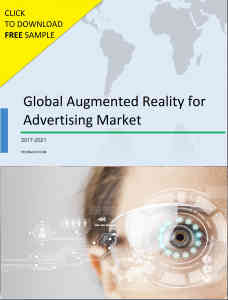Augmented Reality (AR) has already become larger than life in today’s world of technology. Pokémon Go, a blockbusting augmented reality game, played by millions of users across the world, has already annexed massive interest for AR, thanks to the latter’s exhaustive range of real-world applicability. However, AR is not just about games anymore. Infact, its influence now stretches beyond just digital simulations and entertainment.
AR technology has incredible prospects in an assortment of industries, from healthcare to education, from sports to construction. Right now, AR is knee deep in the marketing and advertising sector – with high ambitions to transform the way the digital advertising industry functions.
Why is augmented reality the future of advertising?
In the present context, advertisers are looking at augmented reality as part of their prime marketing campaigns, to attract new customers as well as retain the existing ones. This translates to developing an in-depth knowledge about their target customers’, including understanding the latter’s browsing habits and individual triggers that prompt these customers to buy varied products and services.
 Augmented reality makes marketing campaigns interactive, allowing advertisers and marketers to reach out to consumers in a visually appealing format. Several advertising companies have already embraced this cutting-edge technology and many more are expected to follow suit. AR technology is relatively easy to develop and deploy, and works seamlessly on a wide assortment of platforms and applications.
Augmented reality makes marketing campaigns interactive, allowing advertisers and marketers to reach out to consumers in a visually appealing format. Several advertising companies have already embraced this cutting-edge technology and many more are expected to follow suit. AR technology is relatively easy to develop and deploy, and works seamlessly on a wide assortment of platforms and applications.
Although augmented reality advertisements have been mainly used by early adopters thus far, they will undoubtedly become more widespread as the number of active AR users increases. Listed herein are the reasons why marketers and advertisers will widely adopt augmented reality for interactive marketing campaigns and consequently drive massive business growth-
1) AR campaigns are cheaper than print ads
Although digital advertisements are extremely popular, traditional print media ads are far from obsolete. Nevertheless, placing ad campaigns in popular print magazines can be quite expensive. Alternatively, online advertising in AR format is usually more affordable and far more immersive than print advertising. As a single AR application can be used for several campaigns, launching interactive ads is comparatively cheaper than placing a print campaign in a bestselling magazine.
2) Increasing adoption of the mobile AR platform
It is quite evident that the use of mobile devices has dramatically increased across the world. Consequently, mobile devices have become the most relevant platform for augmented reality advertising. The combination of AR and mobile advertising is offering marketers abundant opportunities to create more real-looking advertising experiences for the customers, across the world. AR advertising offers the delicate and interactive aspects of touch, movement, sound, and sight in mobile ads. Thus, the products look more real – transforming the advertising into a highly personalized experience.
Mobile application development companies that promote disruptive innovations in every stage of their services can profitably consider the blending of their marketer’s advertising strategies with AR. This hybrid approach draws from the strengths of both disciplines,ss and is doubly effective.
Technavio’s market research report on the associated topic is a good place to start. Understand the global market for augmented reality in advertising by downloading the FREE sample report.



